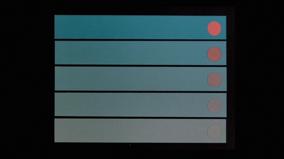New release
Coming
None
Animated Motion: Part 2
1976
8 min
Leaving soon
In this short animation film, Norman McLaren presents the first 3 of the 5 categories of motion: constant, accelerated and decelerated. Various types of acceleration and deceleration are demonstrated, and examples are shown of how these types of motion may be applied in regard to gesture, gravity and perspective.

Details
In this short animation film, Norman McLaren presents the first 3 of the 5 categories of motion: constant, accelerated and decelerated. Various types of acceleration and deceleration are demonstrated, and examples are shown of how these types of motion may be applied in regard to gesture, gravity and perspective.
-
directorNorman McLarenGrant Munro
-
producerNorman McLarenGrant Munro
-
cameraRaymond Dumas
-
re-recordingMichel Descombes
Education
Ages 10 to 18
School subjects

















